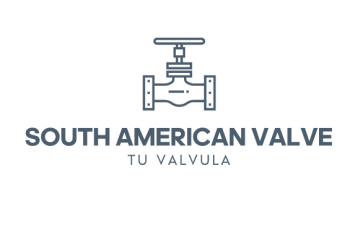Steam Pressure Reducing Valve
South American Valve is a top steam pressure reducing valve supplier in Peru. A Steam Pressure Reducing Valve (PRV) is a device that is used to reduce and regulate the pressure of steam in a steam system. Steam is a highly pressurized and high-temperature gas, and if it is not properly controlled, it can cause damage to the equipment and the piping system. A PRV is designed to maintain a constant and safe level of pressure in the steam system by reducing the pressure of the steam that enters it. It does this by using a spring-loaded diaphragm that opens and closes the valve in response to changes in pressure.
The valve is typically installed in the steam line and is set to reduce the pressure to the desired level. The pressure can be adjusted by changing the setpoint of the valve, which is done by adjusting the spring tension. This allows the valve to maintain a consistent pressure, regardless of variations in steam demand. PRVs are commonly used in a variety of industrial applications, including steam-powered machinery, boilers, and heating systems. They are essential components of any steam system, as they help to prevent damage to equipment and ensure that the system operates safely and efficiently.
Parts
Body
Seat
Spring
Diaphragm
Bonnet
Advantages
Improved Safety: One of the primary benefits of a PRV is that it helps to maintain a safe and consistent pressure in the steam system, which reduces the risk of accidents and equipment failures.
Energy Savings: By reducing the pressure of the steam, a PRV can help to lower energy costs by reducing the amount of steam that is required to achieve the desired level of heat or power.
Increased Efficiency: When the pressure in a steam system is too high, it can cause unnecessary wear and tear on equipment, as well as increase the likelihood of leaks and other issues. By regulating the pressure, a PRV helps to improve the efficiency and lifespan of the system.
Better Control: A PRV allows for precise control over the pressure in a steam system, which makes it easier to maintain consistent temperatures and pressures throughout the system.
Reduced Maintenance: By preventing pressure fluctuations and reducing wear and tear on equipment, a PRV can help to reduce the need for maintenance and repairs, which can save time and money in the long run.
Industries
Power Generation
Textile manufacturing
Petrochemicals
Refineries
Applications
Boilers: PRVs are commonly used in boilers to maintain a consistent and safe level of steam pressure.
Turbines: In power generation, PRVs are used to regulate the steam pressure that is used to power turbines.
Heating Systems: PRVs are used in HVAC systems to regulate the pressure of steam that is used to heat buildings.
Chemical Processing: PRVs are used in chemical processing to regulate the pressure of steam that is used in various chemical reactions.
Refineries: In refineries, PRVs are used to regulate the pressure of steam that is used to power equipment and processes.
Textile Manufacturing: PRVs are used in textile manufacturing to regulate the pressure of steam that is used to power machinery.
Paper Production: PRVs are used in paper production to regulate the pressure of steam that is used to dry paper.
Available Material
Body, Bonnet: Ductile Iron, WCB
Disc: 2Cr13
Seat: SS410, 2Cr13
Plug: SS410, 2Cr13
Stem: 2Cr13, SS410
Diaphragm: 321 S.S.
Adjustable Spring: UNS G92600, 1Cr18Ni9Ti
Nominal Size: 1/2″ to 8″
Nominal Pressure: 2.5 to 4.0MPa
Casing Body Test Pressure: 3.75 MPa
Sealing Test Pressure: 2.5 MPa
Max. Inlet pressure: 2.5 MPa
Outlet pressure range: 0.02 – 1.6 MPa
Pressure Reducing Valve


